
Brassicaceae (formerly Cruciferae): the Cabbage Family
Cabbage and Mustard are so delicious together - perhaps it is because they are so closely related. Wildflower seeds in this family are often added to the supplementary mix that we put onto the bird table, helping the plants to spread. I found this plant in the vicinity of one of our bird tables in Cuddington, Surrey; it can be found throughout the borough.
Epsom & Ewell Flower Finder
Brassicaceae (formerly Cruciferae): the Cabbage Family
We take another look at the vegetable garden (as we did with the Carrot Family). In early spring when last year's cabbage, radish and turnip run to flower, it is a clue, although some of our wildflowers in this family don't look like a cabbage at all. Like the greens we try so hard to grow, when these plants appear, great food is in store for hungry caterpillars - and in turn, the creatures enjoying caterpillars as their favourite take-out.
EXPLORE THE CARROT FAMILY HOME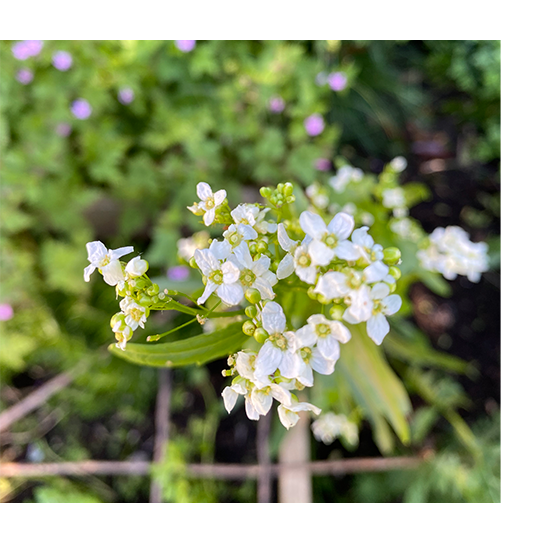
Armoracia rusticana
Horseradish.
Hairless leaves on long stalks, white flowers. Plant up to 1.5 metre high.
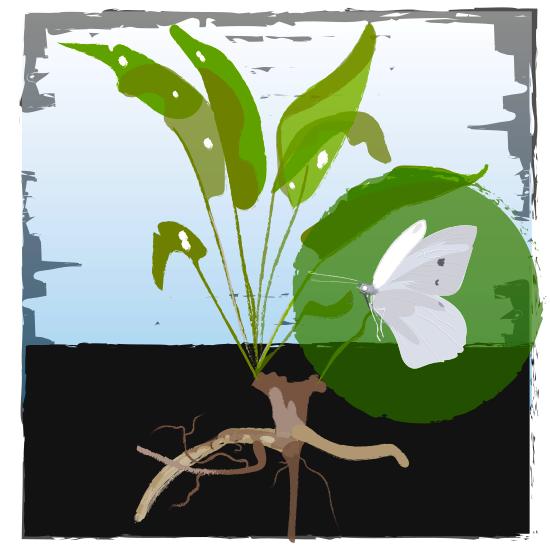
About
Seen on allotments and escapes into wild areas. It can be invasive, but remains a vegetable garden favourite, harvested for huge, spicy roots. The Small White butterfly lays her eggs on the leaves, which is why they are often full of holes.
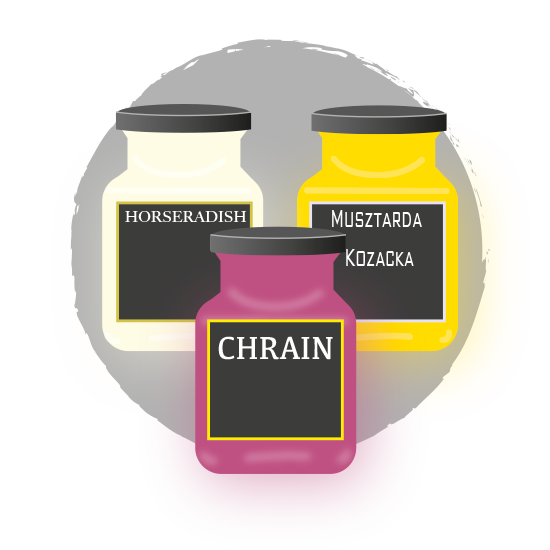
During WW2 the bombing of dwellings and gardens spread the roots widely. My Grandmother capitalised on this, selling home-made horseradish relish from her window. Horseradish is popular, in various guises, in many cutures.
RETURN TO LIST
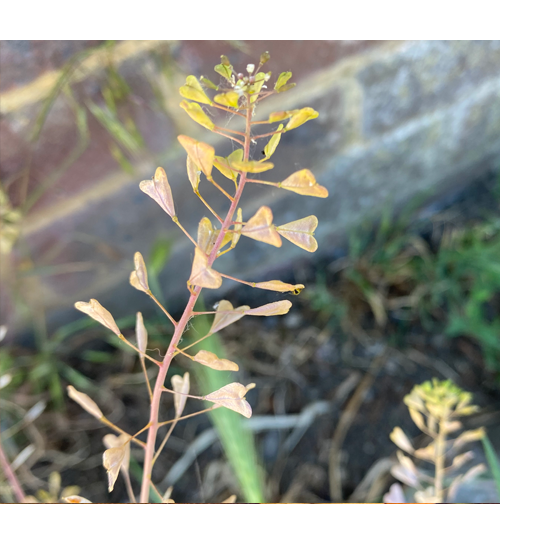
Capsella bursa-pastoris
Shepherd's Purse.
Variably hairy, long flowering stalk. Plant up to 0.5 metre high.
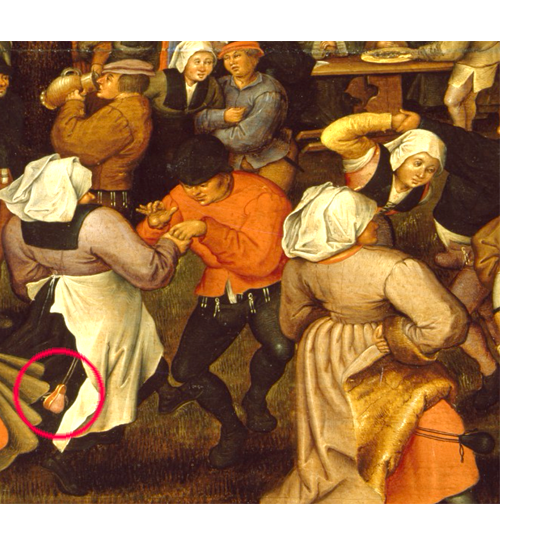
About
A “protocarnivorous” plant. In moist soil the seed exudes a substance that traps and digests small insects and microorganisms. As the seed germinates, the nutrients from the insects feed the seedling. Medieval purses in this picture inspire the plant's name.
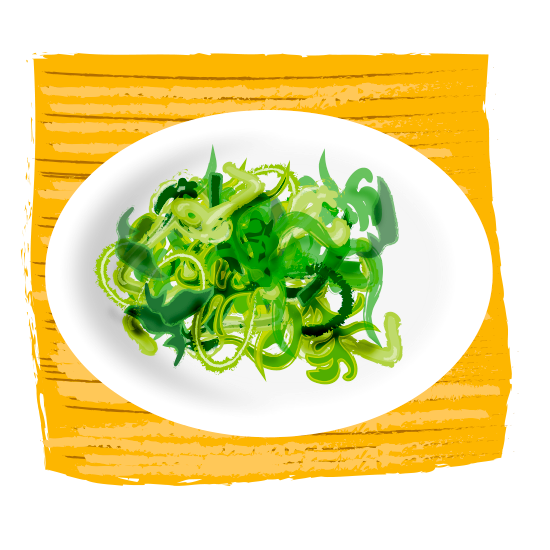
A vegetable side dish made of naengi (shepherd’s purse) parboiled and mixed with a seasoned soy sauce. PLEASE KNOW WHAT YOU ARE PICKING! Source: Korean Food Guide in English (Ed. The Korea Foundation, Cookand, 2003) ISBN: 89-89782-10-4
RETURN TO LIST
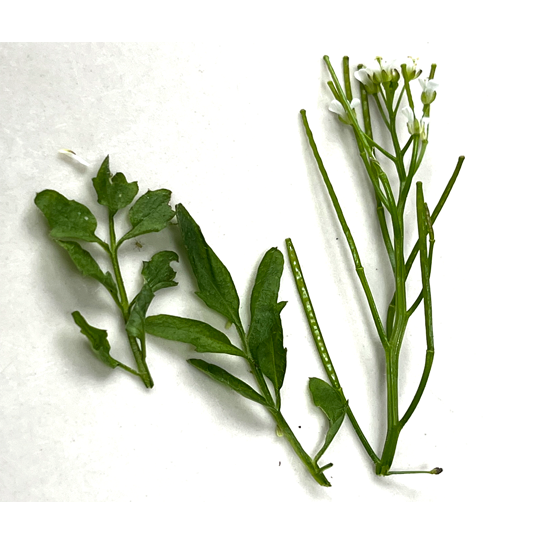
Cardamine hirsuta
Hairy Bittercress.
Hairy leaf stems, long seed pods. Plant up to 0.3 metre high.

About
Tiny white flowers close in dull weather. This spring flowering plant feeds hungry bees. It can also give you a useful cook's ingredient when your herb garden is fast asleep.
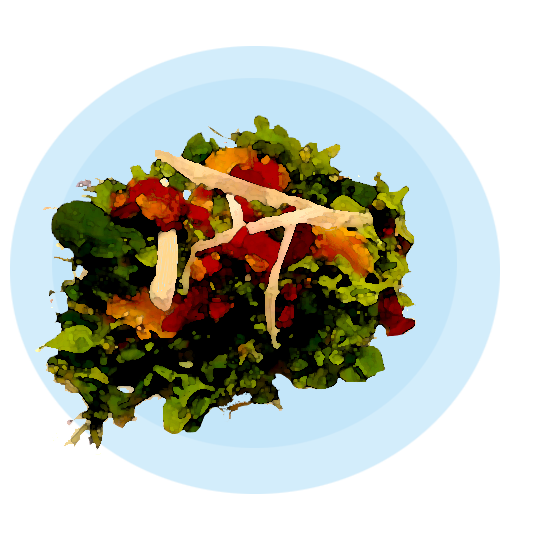
With CAREFUL IDENTIFICATION you will find that the subtle "cress mixed with parsley" flavour is a good addition to salads.
RETURN TO LIST
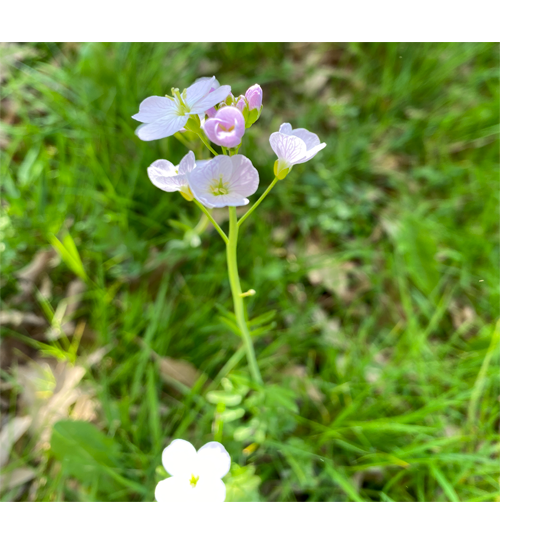
Cardamine pratensis
Cuckoo Flower, Lady's Smock.
Usually hairless, long seed pods. Plant up to 0.6 metre high.
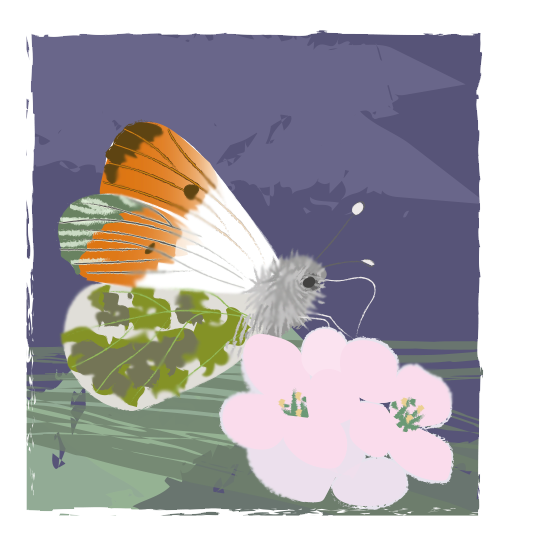
About
Preferring a damp position but grows happily where it is not disturbed by digging. It is the county flower of Cheshire and a favourite of the Orange Tip butterfly.
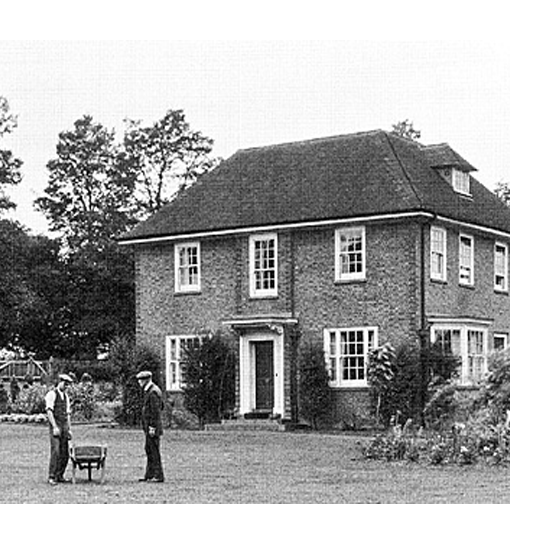
The meadow area near Shadbolt Park House, Cuddington, has a damp spot where these pretty flowers appear at "Cuckoo time", April-May. The Epsom Cuckoo calls on the common.
RETURN TO LIST
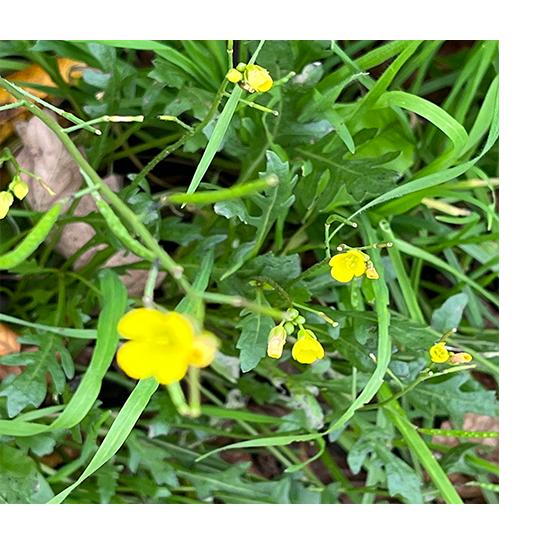
Diplotaxis muralis
Annual Wall Rocket, Stinkweed.
Hairless, apart from base of stem. Plant up to 0.6 metre high.

About
Arrived in shipwreck cargo off the Kent coast in 1778. Since then, this native from Southern Europe and parts of Asia has spread successfully, finding its way to Ewell Court in 2020! Loves to grow on old walls and paving.
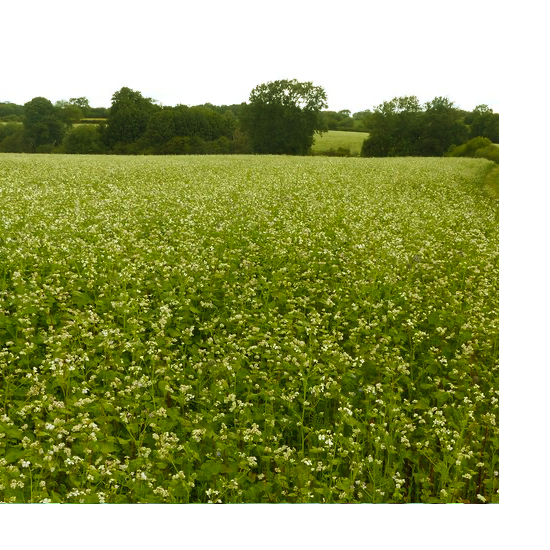
This plant, with others, is grown as a cover crop or "green manure". The spreading habit suppresses weeds. Dug into the soil before crops are sown, it provides vital nutrients. Allowed to flower, a lovely pollinator plant.
RETURN TO LIST

Sinapsis alba
White Mustard, Wild Mustard.
Hairless, with bristly seed pods. Plant up to 1 metre high.
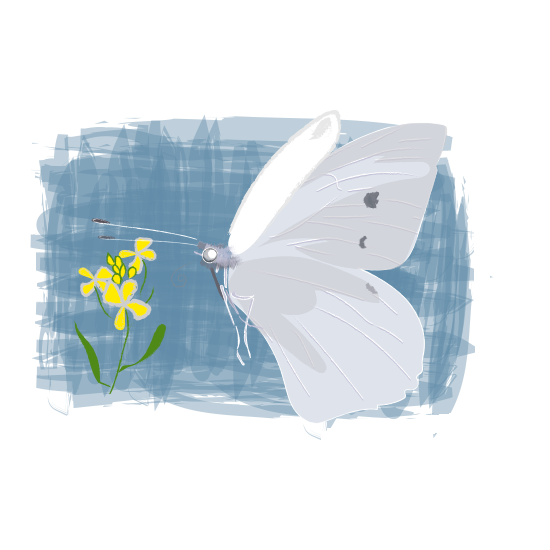
About
Bright yellow flowers turn to pods of spicy seeds. Popular with wild food foragers BUT PLEASE BE SURE THIS IS WHAT YOU ARE PICKING. Popular with the Small White butterfly and her caterpillars.

Historically, this was used to make mustard by grinding the seeds. Plant breeders have perfected the plant to a higher seed yielding strain that manufacturers of mustard use today.
RETURN TO LIST
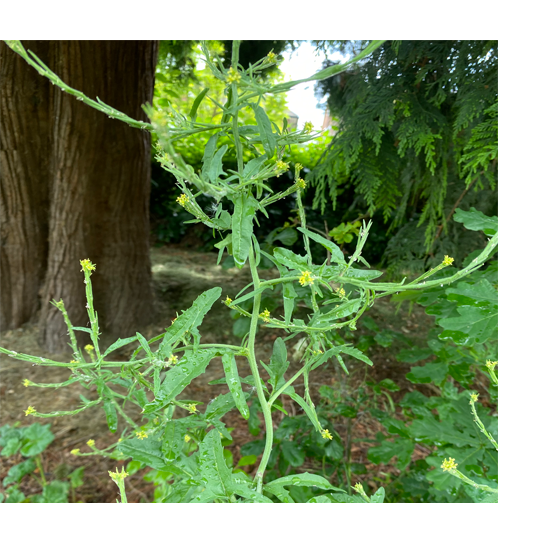
Sisymbrium officinale
Hedge Mustard, Khubkala.
Hairless to bristly hairy, pods tight to stem. Plant up to 1 metre high. I found this one at Bourne Hall, Ewell Village.

About
Bright yellow and spicy seeds. Used in India as a medicine BUT PLEASE BE SURE THIS IS WHAT YOU ARE PICKING. Popular with the Small White butterfly and her caterpillars.
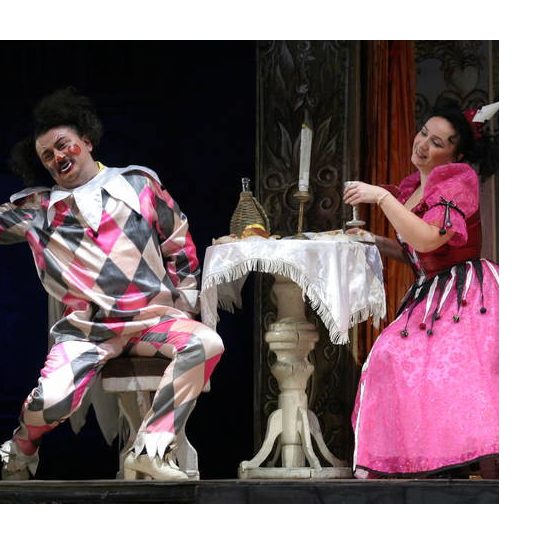
Known in Italy and Spain as "The singer's herb" - used by professional singers as a gargle.
RETURN TO LIST
More information
SURREY'S WILDFLOWERING PROJECT is a community-led initiative, aiming to build a partnership that enables wildflowering in the county as well as promoting and celebrating the boroughs/districts diverse environments. Do take the time to find out more about the project and if you can get involved, even in a small way, you will make a difference.
 SURREY WILDFLOWERING
SURREY WILDFLOWERING